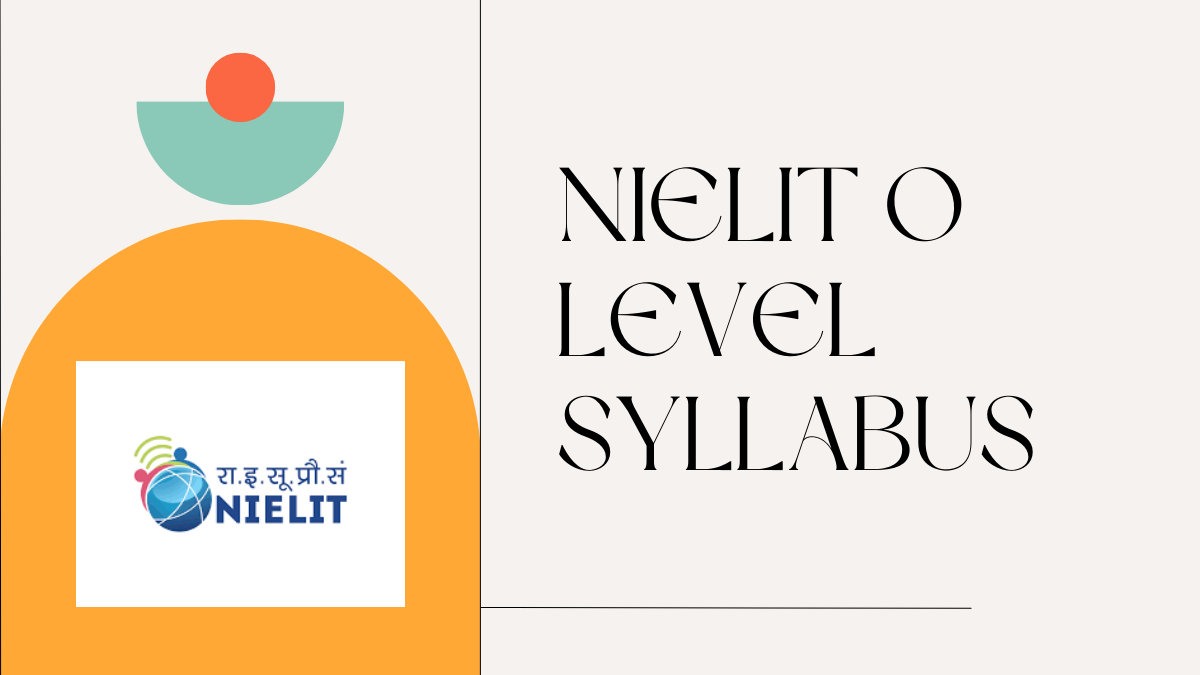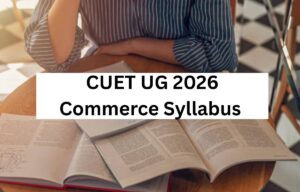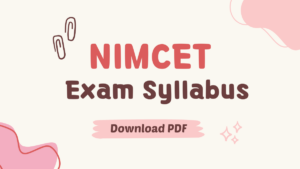The National Institute of Electronics and Information Technology (NIELIT) recently released the NIELIT O Level Syllabus and Exam Pattern on its official website. For good performance in the semester exam, candidates must be familiar with the NIELIT O Level Syllabus and Exam Pattern. Read the entire article to learn about the NIELIT O Level Syllabus 2025 in detail and begin your preparations. Along with a detailed analysis of the exam syllabus. we have shared the direct link to download the NIELIT O Level Syllabus 2025 PDF on this page.
NIELIT O Level Syllabus 2025
The DOEACC ‘O’ Level Course is designed to provide a foundational skill set in the information technology profession. The period of the course is usually one year (two semesters, each lasting six months). The NIELIT Exam Pattern consists of three stages: Theory Examination, Practical Examination, and Project. After passing the test, students receive a passing ‘O’ Level-IT certificate. The new O-level curriculum, which was implemented in 2022, is centered on the four Cs: creativity, communication, collaboration, and critical thinking. Let us now go through the of Theroy and practical Topics of the NIELIT O Level Syllabus 2025 below.
- M1-R5 Information Technology Tools and Network Basics
- PR1-R5 Practical – Information Technology Tools and Network Basics
- M2-R5 Web Designing & Publishing
- PR2-R5 Practical – Web Designing & Publishing
- M3-R5 Programming and Problem Solving through Python
- PR3-R5 Practical – Programming and Problem Solving through Python
- M4-R5 Internet of Things and its Applications
- PR4-R5 Practical – Internet of Things and its Applications
O Level Syllabus 2025 In Detail
As earlier said the O Level Syllabus has divsiided into the four modules for both practical and theory examinations. Each modules is aging claissied into various topics and sub topics. To do well in the sister end exams, students must gradp and mastar in all the topics included in the official syllabus. Now, Let;s go through the each modules of the NIELIT O Level Syllabus 2025 below.
Information Technology Tools and Network Basics
- Introduction to Computer: Computer and Latest IT gadgets, Evolution of Computers & its applications, IT gadgets and their applications, Basics of Hardware and Software, Central Processing Unit, Input devices, Output devices, Computer Memory & storage, Application Software, Systems Software, Utility Software, Open source and Proprietary Software, Mobile Apps.
- Introduction to Operating System: Operating System, Basics of Operating System, Operating Systems for Desktop and Laptop, Operating Systems for Mobile Phone and Tablets, User Interface for Desktop and Laptop, Task Bar, Icons & shortcuts, running an application, Operating System simple setting, using mouse and changing its properties, changing system date and time, changing display properties, to add or remove Program and its features, adding, removing & sharing Printers, File and Folder management, types of file extensions.
- Word Processing: Word Processing Basics, Opening Word Processing Package, Title Bar, Menu Bar, Toolbars & Sidebar, Creating a New Document, Opening and Closing Documents, Opening Documents, Save and Save As, Closing Document, Using The Help, Page Setup, Page Layout, Borders, Watermark, Print Preview, Printing of Documents, PDF file and Saving a Document as PDF file, Text Creation and manipulation, Document Creation, Editing Text, Text Selection, Cut, Copy and Paste, Font, Color, Style and Size selection, Alignment of Text, Undo & Redo, AutoCorrect, Spelling & Grammar, Find and Replace, Formatting the Text, Creating and using user defined Styles, Paragraph Indentation, Bullets and Numbering, Change case, Header & Footer, Table Manipulation, Insert & Draw Table, Changing cell width and height, Alignment of Text in cell, Delete / Insertion of Row, Column and Merging & Splitting of Cells, Border and Shading, Mail Merge, Table of Contents, Indexes, Adding Comments, Tracking changes, Macros.
- Spreadsheet: Elements of SpreadSheet, Creating of SpreadSheet, Concept of Cell Address [Row and Column] and selecting a Cell, Entering Data [text, number, date] in Cells, Page Setup, Printing of Sheet, Saving Spreadsheet, Opening and Closing, Manipulation of Cells & Sheet, Modifying / Editing Cell Content , Formatting Cell (Font, Alignment, Style ), Cut, Copy, Paste & Paste Special, Changing Cell Height and Width, Inserting and Deleting Rows, Column, AutoFill, Sorting & Filtering, Freezing panes, Formulas, Functions and Charts, Using Formulas for Numbers (Addition, Subtraction, Multiplication & Division), AutoSum, Functions (Sum, Count, MAX, MIN, AVERAGE),Sort, Filter, Advanced Filter, Database Functions ( DSUM, DMIN,DMAX, DCOUNT, DCOUNTA), What-if Analysis, Pivot table Charts (Bar, Column, Pie, Line), Data Validation.
- Presentation: Creation of Presentation, Creating a Presentation Using a Template, Creating a Blank Presentation, Inserting & Editing Text on Slides, Inserting and Deleting Slides in a Presentation, Saving a Presentation, Manipulating Slides, Inserting Table , Adding Pictures, Inserting Other Objects, Resizing and Scaling an Object, Creating & using Master Slide, Presentation of Slides , Choosing a Set Up for Presentation, Running a Slide Show, Transition and Slide Timings, Automating a Slide Show, Providing Aesthetics to Slides & Printing, Enhancing Text Presentation, Working with Color and Line Style, Adding Movie and Sound, Adding Headers, Footers and Notes, Printing Slides and Handouts.
- Introduction to Internet and WWW, E-mail, Social Networking and e-Governance Services: Basic of Computer Networks, Local Area Network (LAN), Wide Area Network (WAN), Network Topology , Internet, Concept of Internet & WWW, Applications of Internet, Website Address and URL, Introduction to IP Address, ISP and Role of ISP, Internet Protocol, Modes of Connecting Internet (HotSpot, Wifi, LAN Cable, BroadBand, USB Tethering), Identifying and uses of IP/MAC/IMEI of various devices, Popular Web Browsers (Internet Explorer/Edge, Chrome, Mozilla Firefox, Opera etc.), Exploring the Internet , Surfing the web, Popular Search Engines, Searching on Internet, Downloading Web Pages, Printing Web Pages.
- Digital Financial Tools and Applications, Overview of FutureSkills & Cyber Security: Digital Financial Tools, Understanding OTP [One Time Password]and QR [Quick Response] Code, UPI [Unified Payment Interface], AEPS [Aadhaar Enabled Payment System], USSD[Unstructured Supplementary Service Data], Card [Credit / Debit], eWallet, PoS [Point of Sale], Internet Banking, National Electronic Fund Transfer (NEFT), Real Time Gross Settlement (RTGS), Immediate Payment Service (IMPS), Online Bill Payment
Web Designing and Publishing
- Introduction to Web Design and Editors, HTML Basics: Introduction of Internet, WWW, Website, Working of Websites, Webpages, Front End, Back End, Client and Server Scripting Languages, Responsive Web Designing, Types of Websites (Static and Dynamic Websites).
- Cascading Style Sheets (CSS): Introduction to CSS, Types of CSS, CSS Selectors: Universal Selector, ID selector, Tag Selector, Class Selector, Sub Selector, Attribute Selector, Group Selector, CSS Properties: BackGround properties, Block Properties, Box properties, List properties, Border Properties, Positioning Properties, CSS Lists CSS Tables, CSS Menu Design CSS Image Gallery,
- CSS Framework: Web Site Development using W3.CSS Framework, W3.CSS Intro, W3.CSS Colors, W3.CSS Containers, W3.CSS Panels, W3.CSSBorders, W3.CSSFonts, W3.CSS Text, W3.CSS Tables, W3.CSS List, W3.CSSImages, W3.CSS Grid
- JavaScript and Angular Js: Introduction to Client Side Scripting Language, Variables in Java Script, Operators in JS, Conditions Statements, JS Popup Boxes, JS Events, Basic Form Validations in JavaScript. Introduction to Angular JS: Expressions, Modules and Directives.
- Photo Editor: Features of Photo Editing:Tools: Selection Tools, Paint Tools, Transform Tools, Text Tool, Layers, Brightness/ Contrast, Improve Colors and tone, Filters.
- Web Publishing and Browsing: Overview, SGML (Standard Generalized Markup Language), Web hosting Basics, Documents Interchange Standards, Components of Web Publishing, Document management, Web Page Design Considerations and Principles, Search and Meta Search Engines, WWW, Browser, HTTP, Publishing Tools.
Programming and Problem Solving Through Python Language
- Introduction to Programming: The basic Model of computation, algorithms, flowcharts, Programming Languages, compilation, testing & debugging and documentation.
- Algorithms and Flowcharts to solve problems: Flow Chart Symbols, Basic algorithms/flowcharts for sequential processing, decision based processing and iterative processing. Some examples like: Exchanging values of two variables, summation of a set of numbers, Decimal Base to Binary Base conversion, Reversing digits of an integer, GCD (Greatest Common Divisor) of two numbers, Test whether a number is prime, factorial computation, Fibonacci sequence, Evaluate ‘sin x’ as sum of a series, Reverse order of elements of an array, Find largest number in an array, Print elements of upper triangular matrix, etc.
- Introduction to Python: Python Introduction, Technical Strength of Python, Introduction to Python Interpreter and program execution, Using Comments, Literals, Constants, Python’s Built-in Data types, Numbers (Integers, Floats, Complex Numbers, Real, Sets), Strings (Slicing, Indexing, Concatenation, other operations on Strings), Accepting input from Console, printing statements, Simple ‘Python’ programs.
- Operators, Expressions and Python Statements: Assignment statement, expressions, Arithmetic, Relational, Logical, Bitwise operators and their precedence, Conditional statements: if, if-else, if-elif-else; simple programs, Notion of iterative computation and control flow –range function, While Statement, For loop, break statement, Continue Statement, Pass statement, else, assert.
- Sequence data types: Lists, tuples and dictionary, (Slicing, Indexing, Concatenation, other operations on Sequence datatype),concept of mutability, Examples to include finding the maximum, minimum, mean; linear search on list/tuple of numbers, and counting the frequency of elements in a list using a dictionary.
- Functions: Top-down approach of problem solving, Modular programming and functions, Function parameters, Local variables, the Return statement, DocStrings, global statement, Default argument values, keyword arguments, VarArgs parameters. Library function-input(), eval(),print(), String Functions: count(), find(), rfind(), capitalize(), title(), lower(), upper(), swapcase(), islower(), isupper(), istitle(), replace(), strip(), lstrip(), rstrip(), aplit(), partition(), join(), isspace(), isalpha(), isdigit(), isalnum(), startswith(), endswith(), encode(), decode(), String: Slicing, Membership, Pattern Matching, Numeric Functions: eval(), max(), min(), pow(), round(), int(), random(), ceil(), floor(), sqrt(), Date & Time Functions, Recursion.
- File Processing: Concept of Files, File opening in various modes and closing of a file, Reading from a file, Writing onto a file, File functions-open(), close(), read(), readline(), readlines(),write(), writelines(),tell(),seek(), Command Line arguments.
- Modules: Scope of objects and Names, LEGB Rule Module Basics, Module Files as Namespaces, Import Model, Reloading Modules.
- NumPy Basics: Introduction to NumPy, ndarray, data types, array attributes, array creation routines, Array From Existing Data, Array From Numerical Ranges, Indexing & Slicing
Internet of Things and its Applications
- Introduction to IoT: Applications/Devices, Protocols and Communication Model: Introduction – Overview of Internet of Things(IoT), the characteristics of devices and applications in IoT ecosystem, building blocks of IoT, Various technologies making up IoT ecosystem, IoT levels, IoT design methodology, The Physical Design/Logical Design of IoT, Functional blocks of IoT and Communication Models, Development Tools used in IoT.
- Things and Connections: Working of Controlled Systems, Real-time systems with feedback loop e.g. thermostat in refrigerator, AC, etc.Connectivity models – TCP/IP versus OSI model, different types of modes using wired and wireless methodology, The process flow of an IoT application.
- Sensors, Actuators and Microcontrollers:
- Sensor – Measuring physical quantities in the digital world e.g. light sensor, moisture sensor, temperature sensor, etc. Actuator – moving or controlling system e.g. DC motor, different type of actuators
- Controller – Role of microcontroller as gateway to interfacing sensors and actuators, microcontroller vs microprocessor, different types of microcontrollers in embedded ecosystems.
- Building IoT Applications: Introduction to Arduino IDE – writing code in sketch, compiling-debugging, uploading the file to Arduino board, role of serial monitor. Embedded ‘C’ Language basics – Variables and Identifiers, Built-in Data Types, Arithmetic operators and Expressions, Constants and Literals, assignment. Conditional Statements and Loops – Decision making using Relational Operators, Logical Connectives – conditions, if-else statement, Loops: while loop, do while, for loop, Nested loops, Infinite loops, Switch statement. Arrays – Declaring and manipulating single dimension arrays Functions – Standard Library of C functions in Arduino IDE, Prototype of a function: Formal parameter list, Return Type, Function call. Interfacing sensors – The working of digital versus analog pins in Arduino platform, interfacing LED, Button, Sensors-DHT, LDR, MQ135, IR. Display the data on Liquid Crystal Display(LCD), interfacing keypad Serial communication – interfacing HC-05(Bluetooth module) Control/handle 220V AC supply – interfacing relay module.
Security and Future of IoT Ecosystem: Need of security in IoT – Why Security? Privacy for IoT enabled devices- IoT security for consumer devices- Security levels, protecting IoT devices Future IoT ecosystem – Need of power full core for building secure algorithms, Examples for new trends – AI, ML penetration to IoT.
Soft skills-Personality Development: Personality Development – Determinants of Personality- self-awareness, motivation, self-discipline, etc., building a positive personality, gestures. Self-esteem – self-efficacy, self-motivation, time management, stress management, Etiquette & manners. Communication and writing skills- objective, attributes and categories of communication, Writing Skills – Resume, Letters, Report, Presentation, etc. Interview skills and body language.









 CUET Commerce Syllabus 2026, Download Su...
CUET Commerce Syllabus 2026, Download Su...
 CUET PG Hindi Syllabus 2026, Download CU...
CUET PG Hindi Syllabus 2026, Download CU...
 NIMCET Syllabus 2026, Download Subject-w...
NIMCET Syllabus 2026, Download Subject-w...














